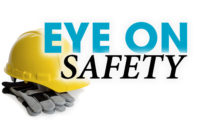Eye on Safety: Active shooter preparedness
Two plans are better than one.

pavel_balanenko / iStock / Getty Images Plus via Getty Images
 An active shooter, sometimes referred to as a hostile intruder, is an individual actively engaged in physical violence or killing of people in a confined and populated area by any means including but not limited to firearms (most frequently used), bladed weapons, vehicles, or any tool being used in a manner that constitutes deadly physical force. In most cases, there is no pattern or method to their selection of victims. Most active shooter situations are uncertain and dynamic meaning they tend to be unpredictable, quickly evolving, and are over within minutes.
An active shooter, sometimes referred to as a hostile intruder, is an individual actively engaged in physical violence or killing of people in a confined and populated area by any means including but not limited to firearms (most frequently used), bladed weapons, vehicles, or any tool being used in a manner that constitutes deadly physical force. In most cases, there is no pattern or method to their selection of victims. Most active shooter situations are uncertain and dynamic meaning they tend to be unpredictable, quickly evolving, and are over within minutes.
The purpose of this article is to raise awareness on the importance of having an established active shooter program. Given the nature and unpredictability of these events, nearly every business benefits from doing so. Moreover, a quality program will adopt two plans instead of one as there are significant differences in how we should respond to incidents in our general area versus those occurring on-site at one of your facilities.
SCENARIO 1 – ACTIVE SHOOTER ON-SITE
If an active shooter/hostile intruder event is taking place at your facility, one of three options exist for building occupants — escape, hide, or engage. If there is an acceptable and safe exit path for occupants to leave the facility, it is the top priority for them to do so. Evacuation is the best response and should be deployed whenever possible.
If evacuation is not possible, the second option is to shelter in place. Find a place to hide where the active shooter is less likely to find you. Your hiding place should be out of the intruder’s view, be able to protect you from whatever means the assailant is planning to use for assault, and not restrict future options for movement should you need to move from that location.
As a last resort, and only when your life is in imminent danger, the protocol is to attempt to disrupt and/or incapacitate the active shooter by acting as aggressively as possible toward the intruder, throwing items/improvising weapons and yelling. The most important element of this last resort response is to act with conviction and commit to your actions. Your life may depend on it.
To execute your response quickly and effectively, a code word will be needed; one that all employees know means “escape”. Just as important is the ability to quickly alert all building occupants of your code word should it be invoked.
The Toolbox Talk on the ASA.net website can provide more guidance on this active shooter scenario (link: https://www.asa.net/Safety-Resources).
SCENARIO 2 – ACTIVE SHOOTER IN GENERAL AREA (OFF-SITE)
In this scenario, the assailant is not in your facility but in close proximity to it. The best alternative, in this case, is to shelter in place and call 9-1-1 immediately. Team assignments are needed to identify actions that members should take to protect facility occupants from exiting the building and prevent an active shooter from entering it.
Like the previous scenario, a code word should be established to alert building occupants. This code word must be different than the one used for on-site active shooter response to ensure personnel does not get confused about the proper course of action.
The more your team becomes familiar with these protocols, the more confident they will be in executing these protocols successfully. There is no substitute for training and repetition.
Once occupants are alerted of the threat, members of the response team should move swiftly to account for the following:
- Direct personnel in yard/outdoor areas to get inside the building immediately (using your code word);
- Lock all doors to prevent entry or exit from the building;
- Communicate the shelter-in-place protocol to those who may not yet be aware;
- Close overhead doors and dock bay entrances to prohibit means of entry;
- Post wardens near exits to ward others away that are trying to enter and to prevent people in the building from attempting to exit;
- Notify individuals that are expected to return to the facility (i.e. outside salespeople, delivery drivers, third-party vendors, employees currently at lunch/on break, etc…);
- Monitor radio/TV/internet sources for updated emergency instructions;
- Review in-house surveillance/security systems and make sure that video footage is being recorded;
- Keeping building occupants updated when new information/guidance is available;
- Designating who will communicate with law enforcement if/when they are at your premises;
- Ensure that people with special needs are being accounted for and assisted when necessary;
This information is also provided in the Toolbox Talk referenced above at https://www.asa.net/Safety-Resources.
TRAINING AND REPETITION
The more your team becomes familiar with these protocols, the more confident they will be in executing these protocols successfully. There is no substitute for training and repetition. Local law enforcement authorities can point you in the right direction for resources including in-person training opportunities locally and for locating templates from which you can develop your company’s response plan. Having a clear and executable plan for these events is a prudent step to take. On behalf of the spouses, parents and children of your employees, we thank you for doing so.
Looking for a reprint of this article?
From high-res PDFs to custom plaques, order your copy today!






